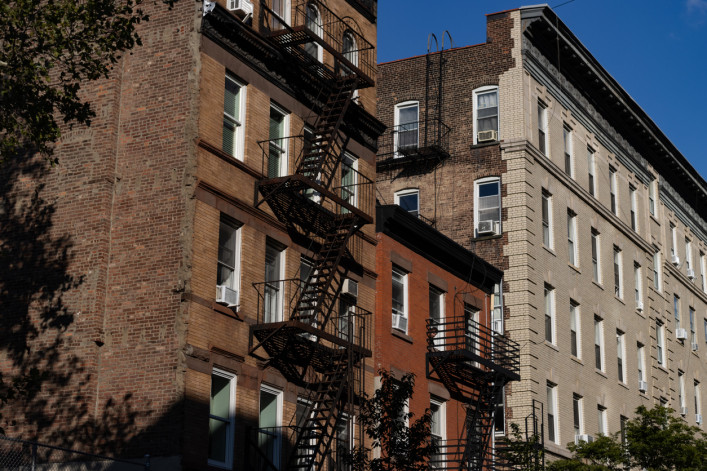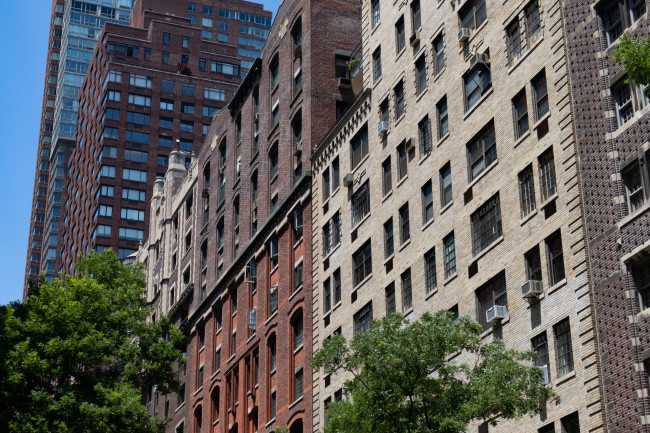3 ways NYC buyers can take advantage of falling mortgage rates
- Do your homework on comps and compare initial asking prices to closed prices
- Seek out wallflowers and fixer uppers that have been lingering on the market
- 'If you have time, show interest, then ghost and let the seller’s agent chase you'

As sellers are forced to compete for buyers, buyers can expect to find more room for negotiation.
iStock
Borrowing is getting cheaper, improving buying power for New Yorkers who need financing and who have been waiting on the sidelines to get into the sales market.
The average 30-year fixed mortgage rate dropped to nearly 6.5 percent earlier this month, after peaking at close to 8 percent in October 2023. The falling rate is likely to slowly loosen up the sales market and increase listings by pulling in owners who were previously reluctant to sell and buy somewhere else if it meant borrowing at a higher rate. It will also pull in buyers who have been renting temporarily while they wait for more favorable conditions.
Still, with low listings and asking prices very high, it’s hard to see how buyers can take advantage of their newfound buying power, but brokers that Brick spoke with had some advice to share on unearthing wallflower listings and fixer-uppers, also the new pricing pressure that sellers will face.
Read on for where buyers can gain an edge in 2024.
Flex your negotiating muscles
Until recently, sellers have not been very negotiable because they essentially held most of the cards: Without much competition from other sellers, there’s no reason to accept a lower bid or cut prices. But that situation is expected to change according to a new report from Kenny Lee, economist at StreetEasy.
He notes that a typical NYC property that sold in December 2023 received 95.8 percent of its initial asking price, slightly below the 96.2 percent rate of December 2022. Lee says he expects sellers “will likely pick up on this widening gap between sale prices and initial asking prices—known as the sale-to-list price ratio."
As sellers are forced to compete for buyers, Lee sees buyers finding more room for negotiation, leading sellers to respond by setting more competitive initial asking prices. The end result: a gradual decline in NYC’s median asking price this year.
Seek wallflowers and fixer-uppers
It’s time-tested advice, but it may be new to you if you’re a first-time buyer: Seek listings that other buyers neglect if you’re looking to get a deal.
Typically, when buyers get into the market, they want to see properties that have just become available, says Mark D. Friedman, a broker at Brown Harris Stevens. “Those are going to have less negotiability than properties that have been on the market a long time,” he explains.
His advice: Look at wallflower listings that have been on the market for 100 or even 150 days.
You may find that these are listings are fixer-uppers that need a lot of work—but that’s where you’re going to get a deal on price, or maybe the seller will cover some closing costs or provide a closing credit, which can be found in co-op buildings that don’t want to see lower average prices.
Richard Rosenthal, an agent at Brown Harris Stevens, says that as the market is starting to shift, some sellers are getting a dose of reality. He’s had sellers tell him, “We want to sell and this is the price we need to get.” It falls to Rosenthal to explain that’s not the ways sales markets operate. In some of these cases, the property needs work and ends up sitting on the market.
Many New Yorkers lost family members during the pandemic. “Those apartments are in less-than-ideal shape, although the family thinks they have stumbled on a $1.5 million windfall,” he explains.
Wait it out and enjoy the chase
If you don’t have to move right away because of a job transfer, new baby on the way, or other big life event, Friedman and Rosenthal suggest playing the long game—it’s what buyer’s and seller’s brokers do all the time.
For example, Friedman found a $3.5 million bedroom property on the Upper West Side for a buyer client. He thought it was worth about $2.9 million, but the seller wouldn’t budge and the listing sat on the market for six months. The owners used it as a pied à terre and didn’t feel a lot of pressure to sell.
But finally—with a new, and more amenable broker—it ended up selling for $2.9 million, with all the furniture included.
The lesson here? “Wait it out,” Friedman says.
“If you have time, show interest, then ghost and let the seller’s agent chase you,” Rosenthal explains.
This tactic goes both ways and shifts depending on whether it’s a buyer’s or seller’s market.
He describes getting three emails from a seller’s broker on behalf of his client. “That doesn’t usually happen,” he says.
You Might Also Like































